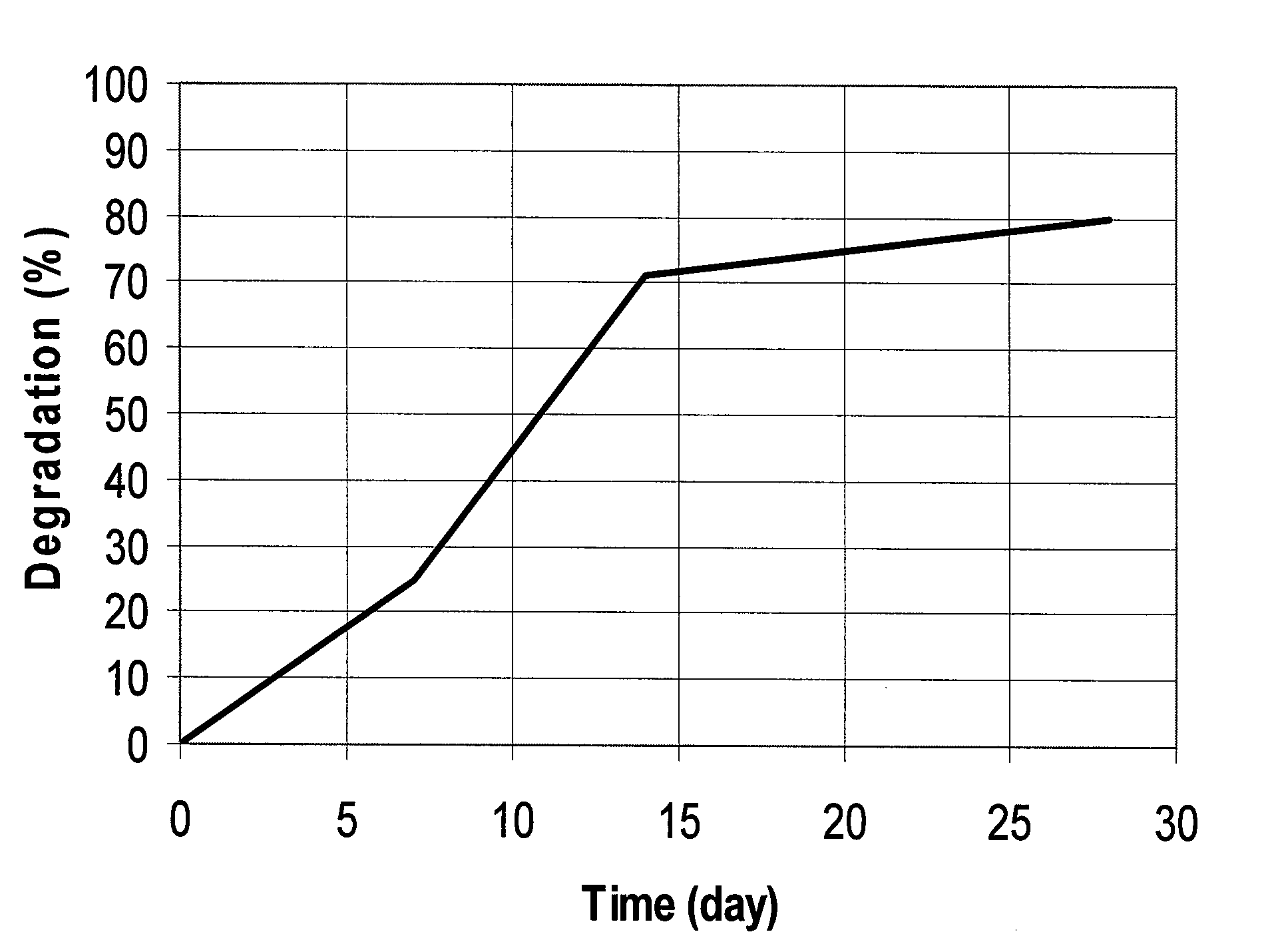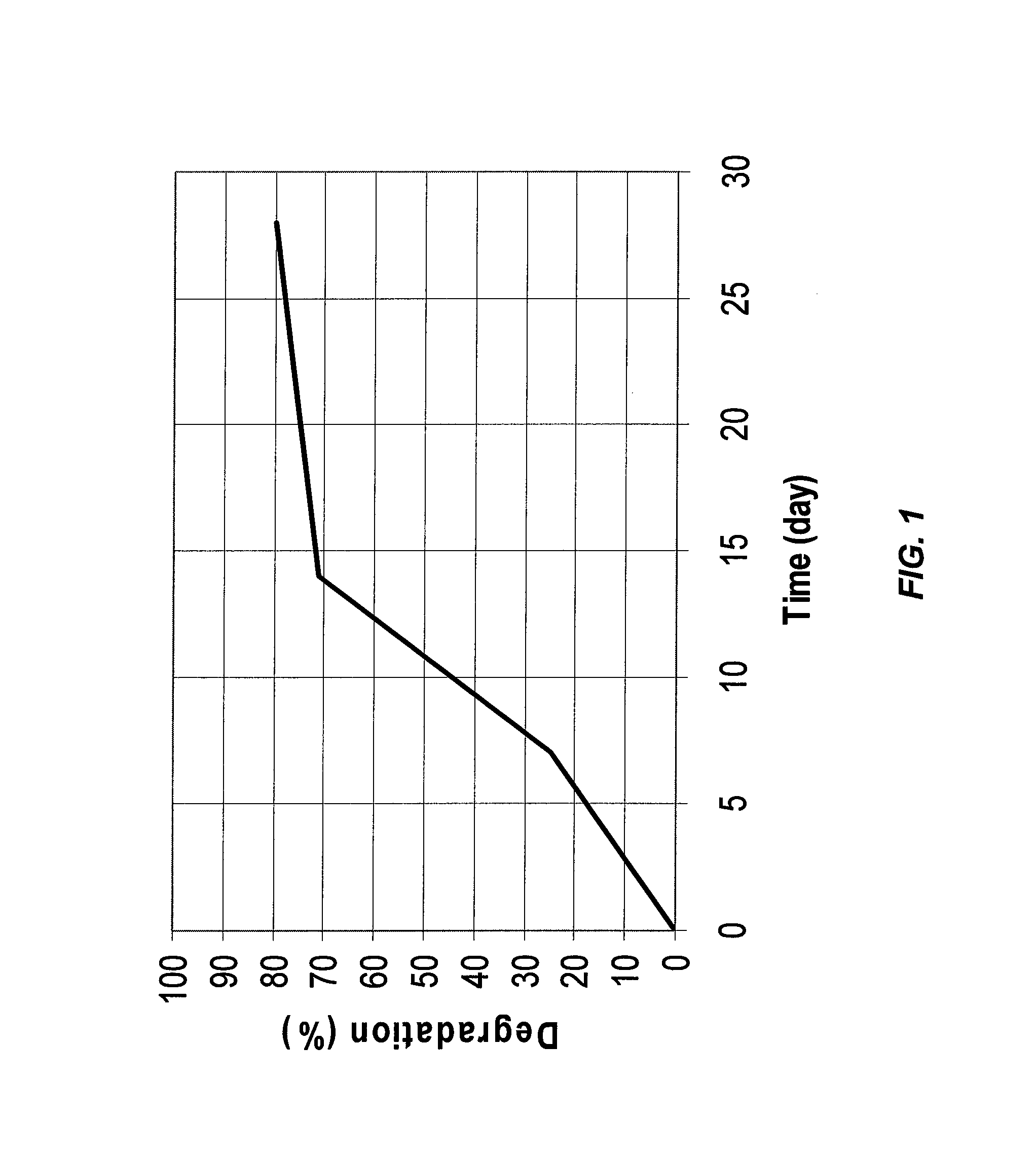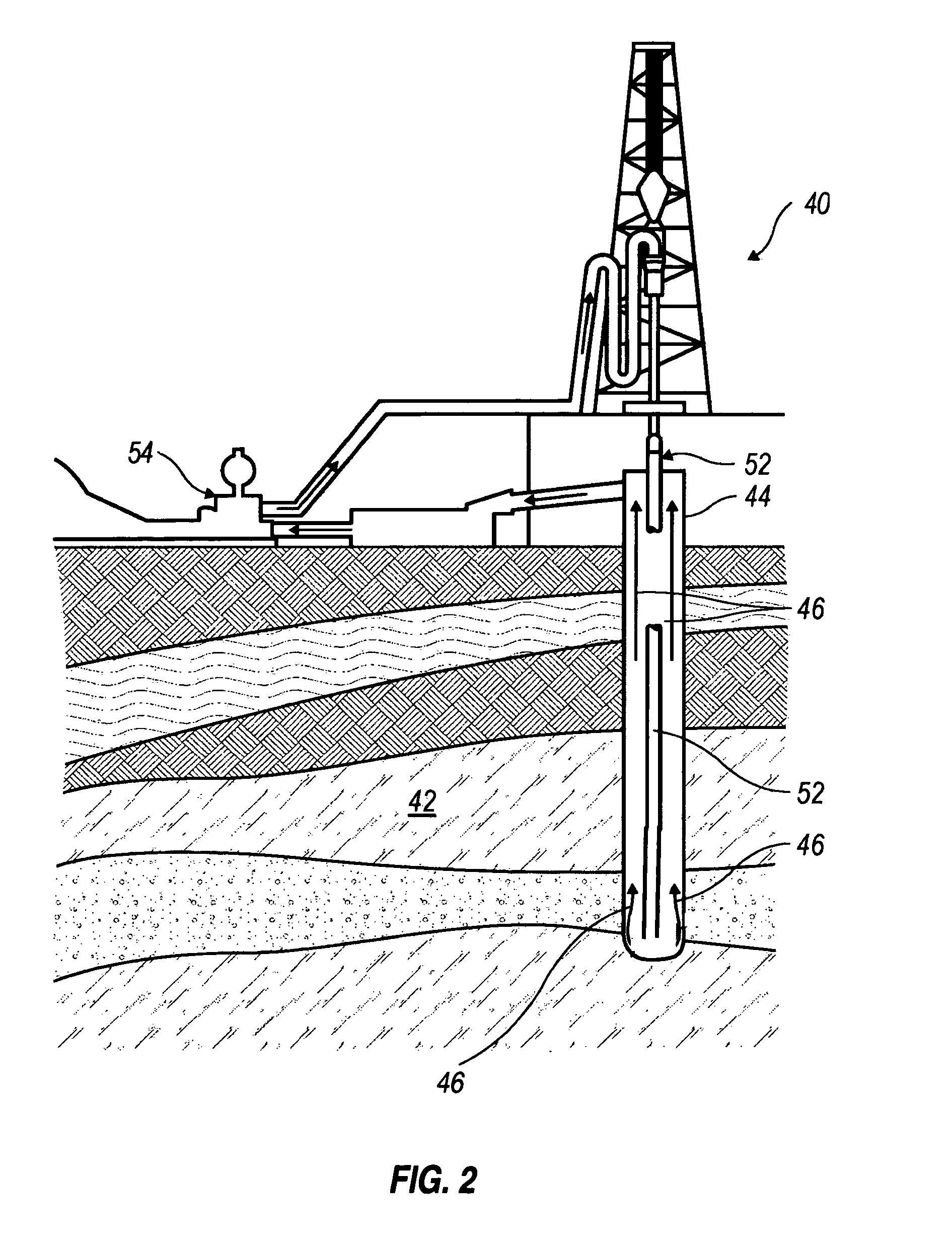Cement compositions comprising biodegradable monomers for retarding the setting thereof
a technology of biodegradable monomers and cement compositions, which is applied in the field of cement compositions, can solve the problems of reducing the thickening time of the composition, unacceptably short thickening time of the composition, and expensive drillout operations, so as to improve the ability of the retarder, increase the thickening time of the cement composition, and low toxicity.
- Summary
- Abstract
- Description
- Claims
- Application Information
AI Technical Summary
Benefits of technology
Problems solved by technology
Method used
Image
Examples
examples
[0024]The invention having been generally described, the following examples are given as particular embodiments of the invention and to demonstrate the practice and advantages thereof. It is understood that the examples are given by way of illustration and are not intended to limit the specification or the claims to follow in any manner.
[0025]Various samples of cement slurries were prepared and tested for thickening times according to API Recommended Practice for Testing Well Cements 10B, 23rd edition, April 2002. Each test sample contained class H cement, 35% bwoc of SSA-1 strength-retrogression additive, a sufficient amount of water to form a slurry having a density of 16.2 pounds per gallon, and different amounts of HIDS and / or HR-25 retarder, as shown in Table 1 below. The thickening times were tested using a HPHT (high pressure-high temperature) consistometer. The thickening times obtained for each sample at different temperatures are also given in Table 1.
[0026]
TABLE 1Thickeni...
PUM
| Property | Measurement | Unit |
|---|---|---|
| temperature | aaaaa | aaaaa |
| temperature | aaaaa | aaaaa |
| bottom hole circulating temperatures | aaaaa | aaaaa |
Abstract
Description
Claims
Application Information
 Login to View More
Login to View More - R&D
- Intellectual Property
- Life Sciences
- Materials
- Tech Scout
- Unparalleled Data Quality
- Higher Quality Content
- 60% Fewer Hallucinations
Browse by: Latest US Patents, China's latest patents, Technical Efficacy Thesaurus, Application Domain, Technology Topic, Popular Technical Reports.
© 2025 PatSnap. All rights reserved.Legal|Privacy policy|Modern Slavery Act Transparency Statement|Sitemap|About US| Contact US: help@patsnap.com



